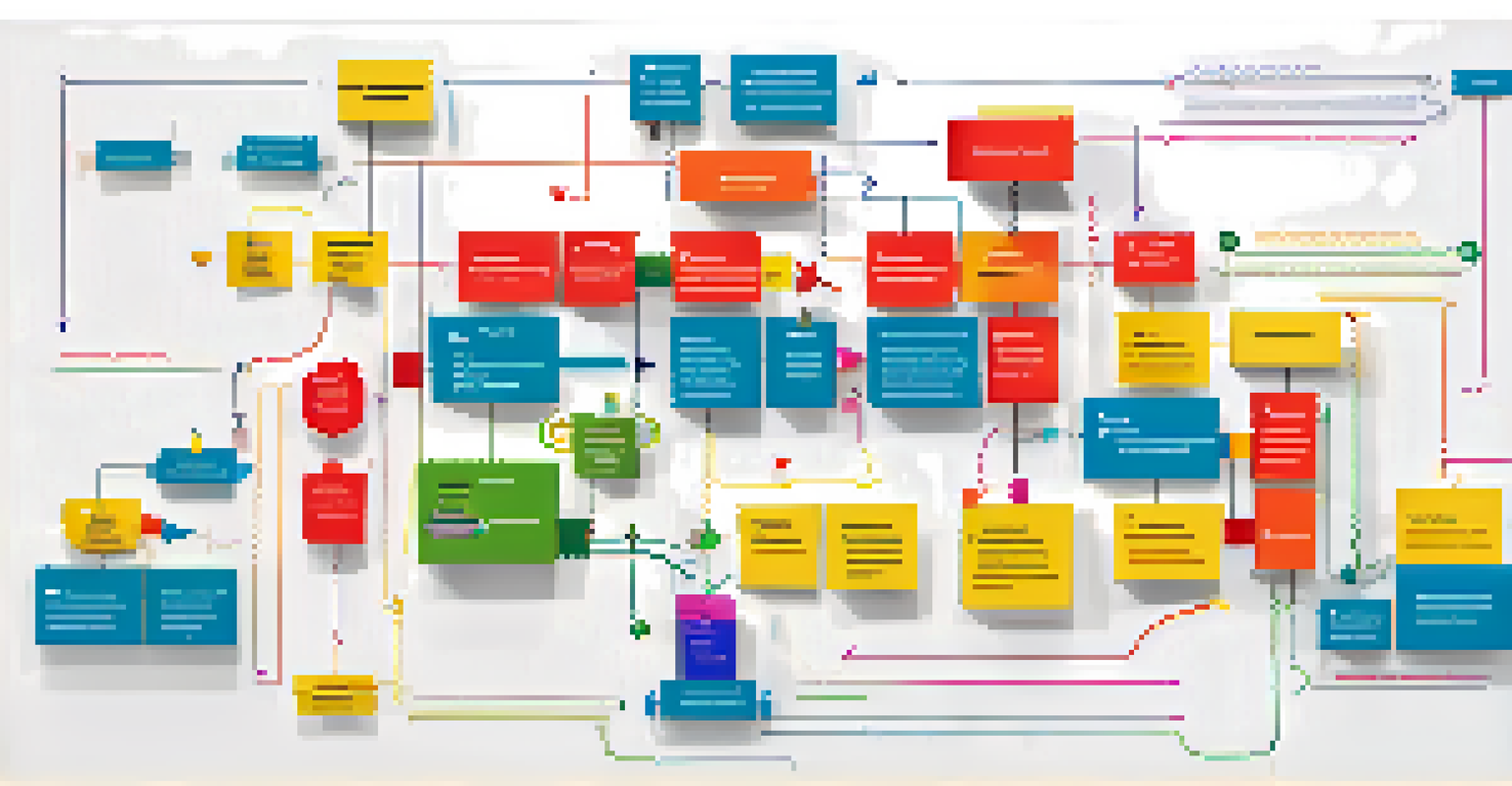Impact of Workplace Hierarchy on Employee Morale and Growth

Defining Workplace Hierarchy and Its Importance
Workplace hierarchy refers to the structured levels of authority and responsibility within an organization. This structure shapes how decisions are made and how information flows from one level to another. Understanding hierarchy is crucial because it influences employee interactions and overall workplace dynamics.
Great leaders create a vision, articulate the vision, passionately own the vision, and relentlessly drive it to completion.
In a typical hierarchy, you have various levels, from executives down to entry-level employees. Each level has distinct roles and responsibilities, which can create clarity but also sometimes lead to challenges. For instance, while a clear hierarchy can streamline decision-making, it may also stifle communication if not managed well.
Ultimately, the way a workplace hierarchy is designed can either support or hinder employee morale and growth. A well-balanced structure encourages collaboration, while a rigid one can create feelings of isolation among lower-level employees.
The Positive Effects of a Healthy Hierarchy on Morale
A healthy workplace hierarchy can foster a sense of belonging among employees. When individuals know where they stand within the organization, it can lead to increased job satisfaction. For instance, clear expectations from supervisors can help employees feel valued and understood.

Moreover, a supportive hierarchy often promotes mentorship opportunities. Employees can learn from their superiors, gaining insights that contribute to their professional growth. This guidance can boost morale as employees feel invested in and supported by the organization.
Healthy Hierarchies Boost Morale
A supportive workplace hierarchy fosters employee belonging and satisfaction through clear expectations and mentorship opportunities.
Additionally, when leaders are approachable and encourage open communication, it creates a culture of trust. Employees are more likely to express their ideas and concerns, which can enhance both morale and innovation within the team.
Challenges of Rigid Hierarchies on Employee Growth
On the flip side, a rigid workplace hierarchy can significantly impact employee morale. When employees feel trapped in their positions with little room for movement, it can lead to frustration and disengagement. This lack of growth opportunities may cause talented individuals to seek employment elsewhere.
The art of communication is the language of leadership.
Furthermore, excessive bureaucracy often accompanies rigid hierarchies. Employees may find themselves stuck in long approval processes, which can stifle creativity and fast decision-making. This can create a culture where innovation is discouraged, leading to a stagnant work environment.
In such cases, employees may feel undervalued and unrecognized for their contributions. When their voices are not heard or their ideas ignored, morale can plummet, affecting overall productivity and workplace satisfaction.
The Role of Communication in Hierarchical Structures
Communication is the lifeblood of any organization, and its effectiveness can be heavily influenced by workplace hierarchy. In a well-functioning hierarchy, communication flows smoothly, allowing for timely feedback and collaboration. This can lead to enhanced employee morale as everyone feels included in the conversation.
However, if communication is primarily top-down, employees may feel disconnected from the decision-making process. This can create a divide between different levels of the hierarchy, making employees feel like mere cogs in a machine rather than valued contributors. Building bridges through open dialogue is essential.
Rigid Structures Hinder Growth
Excessive bureaucracy in rigid hierarchies can stifle creativity and lead to employee frustration and disengagement.
Organizations should strive for a balance where information flows in all directions. Encouraging feedback from all levels can foster a sense of community and belonging, promoting a positive work environment where morale thrives.
Empowering Employees within a Hierarchical Framework
Empowerment is key to maintaining employee morale in any hierarchical system. When employees are given autonomy and the authority to make decisions related to their roles, they feel more invested in their work. This sense of ownership can lead to increased job satisfaction and personal growth.
For example, companies that implement flexible work arrangements or allow team members to take the lead on projects tend to see higher morale. Employees appreciate the trust placed in them and often respond with greater creativity and productivity.
Moreover, empowering employees can help bridge the gap created by hierarchy, as it encourages collaboration and teamwork. When everyone feels they have a voice, the entire organization benefits from a more engaged and motivated workforce.
Recognizing the Need for Flexibility in Hierarchies
Flexibility within workplace hierarchies is essential to adapt to changing business landscapes. Rigid structures may have worked in the past, but today's dynamic work environment requires organizations to be more agile. This adaptability can significantly enhance employee morale and engagement.
For instance, companies that adopt a more fluid approach to hierarchy, allowing for cross-functional teams and collaboration, often see improved innovation. Employees feel freer to share ideas and work together, reducing the barriers created by strict hierarchical boundaries.
Communication is Key to Success
Effective communication within a hierarchical structure promotes collaboration and inclusivity, enhancing overall morale.
Flexibility also allows for the accommodation of diverse work styles and preferences. When employees feel their unique contributions are valued, it can lead to a more positive work atmosphere, ultimately supporting their growth and satisfaction.
Conclusion: Balancing Hierarchy and Employee Satisfaction
In conclusion, the impact of workplace hierarchy on employee morale and growth is multifaceted. A well-structured hierarchy can promote clarity, empowerment, and positive communication, leading to higher morale. However, a rigid structure can hinder growth and diminish job satisfaction.
Organizations must strive to find a balance that fosters both effective leadership and a supportive environment for employees. By prioritizing open communication, flexibility, and empowerment, businesses can create a culture where employees thrive.

Ultimately, recognizing the nuances of workplace hierarchy can enable organizations to cultivate an environment where both morale and growth are prioritized, benefiting everyone involved.